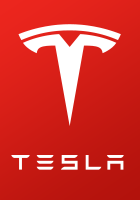Elmo lives in the same small town as his buddy Ernie. He always charges at night with his home HPWC to 80% and his daily commute generally leaves him at 30% at the end of the day, depending on how many errands he has to run in the evening and if he has to go to different studios during the day. He also finds the location of the town's supercharger at the only mall in town to be very convenient and he is usually at the mall twice a week either shopping or eating out. Normally, the only other car he ever sees at the supercharger is Ernie's but if he ever sees two stalls occupied, he doesn't use the supercharger because he doesn't really need it. However, if the supercharger is not being used, he always plugs in and charges to 80% while he is doing his eating or shopping.
Ernie's hypothetical, for those who missed it.
Ernie's hypothetical, for those who missed it.


